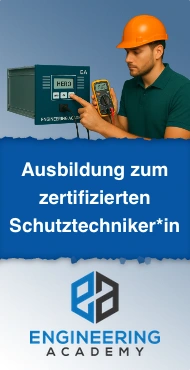elcome dear friends of protection and control engineering. The 5 most important types of star point treatment are the exciting topic of our new series of articles. The star point treatment of a network has no influence on the transmission of electrical energy as long as the network is in faultless condition. Why is the star point treatment so important at all that we have to talk about it here and even whole conferences are dedicated to this topic alone?
In addition to many other aspects, it is above all the availability of the relevant electrical network, which depends on the choice of the network form to a very special extent. When it comes to failure rates due to fault shutdowns, it makes a diametrical difference whether we are in a low-resistance or a compensated network. In addition, there are many more questions that are included in the choice of the neutral point treatment.
🌐Which voltage increase occurs in the event of a fault?
🌐How big is the potential for following faults?
🌐How can over-voltages and blocking be avoided?
🌐What about the step and touch-voltage behave near the fault?
🌐How to control the magnitude of fault currents?
🌐Can the self-extinguishing of ground faults be influenced by the choice of the kind of network?
and what about the economic aspect of the required network structure?
In our series of articles we take a look at the 5 most important types of star point treatment and start today with the isolated network.
The Isolated Network
In an isolated network, the neutral points of all existing generators, transformers and neutral point formers are not earthed (Figure 1 and 2). Even if a generator should be connected to earth via a neutral transformer, it is still an isolated network, as there is no effective ground connection due to the high impedance.


The Voltages
Now, if a single-pole earth fault occurs, we are talking about a ground fault, the voltages are affected the most.

First, there is a transient compensation process in the millisecond range, and the two healthy conductors, which are not affected by the fault, subsequently rise to a stationary amount equal to the phase-to-phase voltage. This means that the amounts of the phase-earth voltages of the healthy phases increase by ∛ times. This rise ratio is called the ground fault factor. If this is greater than 1.4, we are talking about a network that is not effectively earthed. If it is smaller, we have an effectively grounded network in front of us.
In our isolated network, the voltage of the healthy conductors increases to 1.73 times the value of phase-to-ground voltage under fault free conditions and we are therefore in a network that is not effectively earthed.

Damit wird ein wesentliches Merkmal des isolierten Netzes offensichtlich. Aufgrund der hohen Beanspruchungen durch die netzfrequente und stationäre Spannungsüberhöhung in den gesunden Leitern und durch ggf. zusätzlich intermittierendes Verhalten im Erdschlussfall, besteht im isolierten Netz eine vergleichsweise hohe Wahrscheinlichkeit für einen Folgeerdschluss. Dieses Ereignis wird von uns Schutztechnikern liebevoll als Doppelerdschluss bezeichnet.
If the ground fault does not extinguish in the first voltage zero crossing and instead re-ignites several times due to the recurring voltage in the arc channel, traveling waves are the result, which brings an additional stress on the isolation of the network.
Thus, an essential feature of the isolated network becomes obvious. Due to the high stresses caused by the mains frequency and stationary voltage overshoot in the healthy conductors and possibly additionally intermittent behavior in the case of an earth fault, there is a comparatively high probability of a following ground fault in the isolated network. This event is affectionately referred to by our protection engineers as a double earth fault.
The Currents
The currents behave quite boring in the isolated grid. Due to the phase-to-earth capacitances, the capacitive earth fault current Ic flows through the fault location.

Its size is in linear dependence to the extent of the network and thus to the size of the existing ground capacity. The larger the grid, the larger the capacitive ground fault current.

In order for an ignited arc to extinguish on its own, the so-called extinguishing limit must not be exceeded. Where exactly this limit is, can not be determined universally, since it depends not only on the magnitude of the current but also on the voltage level and slope of the recurring voltage. In medium-voltage networks with a dominant cable share, the current should be limited to a maximum of 60 A via the fault location. Let's take an example and assume a 20 kV VPE cable with 120 cross-section, which provides a capacitive ground current of about 2.5 A / km. The maximum permissible cable length is 24 km in our example (15 miles).
For this reason, the isolated grid in Germany and Austria is mainly used within generator blocks and in small industrial and auxiliary networks with low expansion and resulting low capacitive ground fault currents and has a spread of less than 10%. One exception are our friends and colleagues from Switzerland, who operate over 70% of their medium-voltage grids in the isolated way.
What happens if we do not treat the star points of our network in isolation but conductively connect with the earth without resistance?
In this case we are talking about the solidly grounding, which we will introduce in the next part.





















